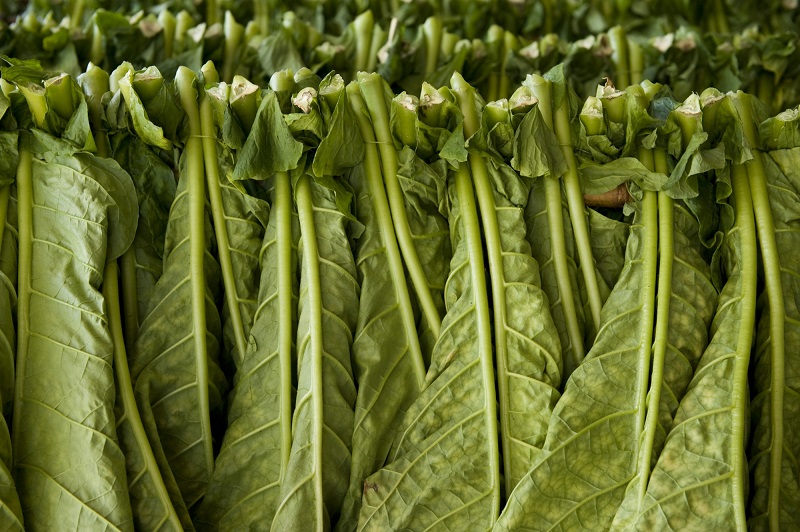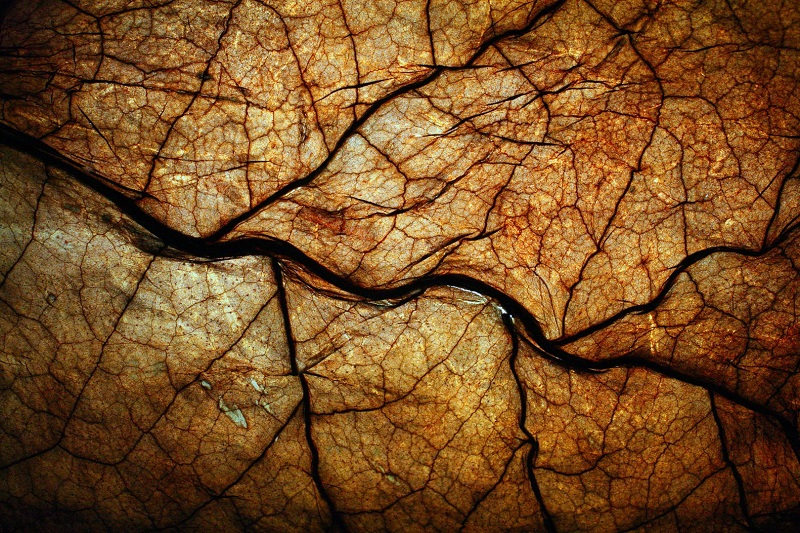In the past years, there have always been many dissertations over the wrapper leaf impact on the cigar aromatic profile. Many producers even pushed themselves to use different wrappers to create a bicolor effect (the barber pole cigars), or used the “candela” shade wrapper to pay homage with smoky swirls to the 17th of march, Saint Patricks Day.
In this article we don’t intend to venture on the effects of the wrapper leaf in the cigar recipe prospective, but rather how important these leaves are in cigars that are made exclusively with Kentucky tobacco. It is important to clarify something before we start. The external leaf of this cigars can be simply called “fascia”, escaping a classification and a typical Spanish nomenclature.
In the making of this article, we wanted to have the opinion and thoughts of Domenico Napoletano, a great expert on Kentucky tobacco (Domenico Napoletano is in the world of tobacco since 1990, when he started his career in the Italian state monopoly. After a short venture into the manufacture Sigaro Toscano, he created, as master blender, the Antico Sigaro Nostrano del Brenta. Nowadays, he collaborates with the new society Moderno Opificio del Sigaro Italiano).

Turning to the examination of the tobacco utilized to wrap the Italian cigar, the biggest difference from the Caribbean tobacco is the cultivation technic. While in the Caribbeans the wrapper leaves are usually cultivated covered and protected from the direct sun irradiation (tabaco tapado), the wrapper for the Italian cigars are always grown under the sun. This doesn’t mean lesser attention from the farmer, that from the seed choice (there are more suitable tobacco variety for this purpose), has to know if those plants will grow wrapper leaves (fascia) or filler leaves. In the first case, in fact, every agricultural phase will be correctly followed, with the next phases of irrigation, fertilization and shearing performed to maximize the result for the finale purpose.
But what are the physical characteristics matching up the perfect leaf to dress an Italian cigar? It seems to be obvious, but the integrity is an essential condition, that has to be kept for all the phases (growth, harvest, treatment, fermentation, maturation) until it reaches the manufacturer. A punctured or torn leaf will rejected immediately.
Another evaluation parameter is the “paginatura della foglia” (leaf pagination). This term includes in a single word many characteristics, such as the size, the structure of the leaf and also the veins dimension. Other than this, what make a leaf valuable enough to be used to dress up a cigar, are the colors (a rich and brilliant brown), the elastic texture and veins (small veins leaves are preferred to the big veins ones). The finest Kentucky wrapper leaf in the world, which have all these characteristics, is the North American one. The ample “paginatura”, the right shade (called in Italian “tonaca di frate”, which means “friar cassock”), its texture, its elasticity and the small veins, make the North American Kentucky wrapper the most sought after (and also the most expensive) for the making of “high regalia” cigars.

However, the attention which flows into the plant growing are not sufficient enough to make every leaf a potential wrapper for a cigar: since every corona leaf has different characteristics, it becomes appropriate to choose those beneath the subapical or median, the most balanced from a chemical point of view, for the final use.
The transformation phase turns then to the curing (fire cured) and fermenting of the Kentucky tobacco. The curing doesn’t differ from the one that would be followed for the leaves destined to be filler, it is exactly the same, but during the fermentation phase is paid a lot more attention.
The fermentation of the Kentucky leaf produces a structural impairment of the same, that would probably broken the leaf during the rolling phase, nullifying all the previous performed work. To obviate this inconvenience, the higher quality cigars are rolled and rested in a room with controlled humidity and temperature, where the wrapper, more humid then the filler, ferments together with the filler. In the case of the lower quality cigars, there is no passage in the maturation chamber, and it is preferred to perform a lighter and gentle fermentation, such to not attack in a violent way the leaf structure of the wrapper.

Lastly, also in the Italian cigar the wrapper is responsible for a significant aromatic contribution. First of all, it is a leaf that combusts very well, reason why a more cadenced puff let the aromatic substances being perceived quicker by the smoker. Considering also the aromatic profile, the North American Kentucky is better than the Italian one, conferring more elegance and strength to the final product.
This quick journey into a small part of the Kentucky world manages to reveal how the agronomy, the paid attention, the cure and the passion of the sector operators are not less consistent than the work made with other tobaccos, especially from the overseas and Caribbean producers.

